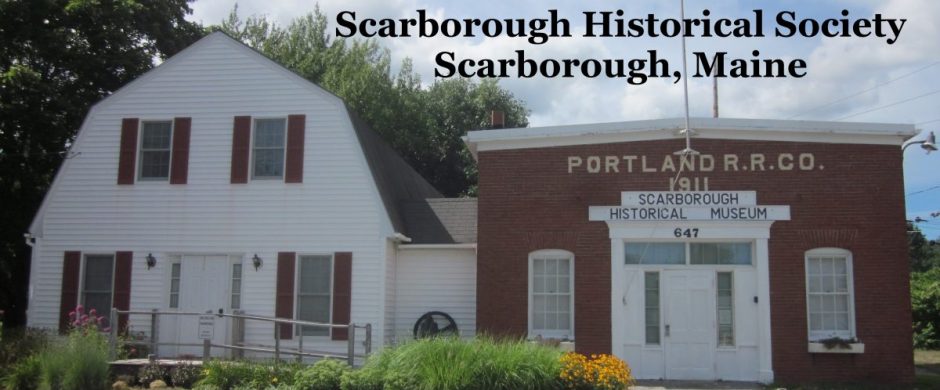Text by Bruce Thurlow
Images from Scarborough Historical Society,
Rodney Laughton and Joseph W. Sno
Trolleys: The Electrics Come to Town
As trains transported people and freight to Portland, Boston and beyond, the trolleys provided easy mobility within the Greater Portland area. Beginning in the 1860s, the Portland Railroad Company operated horse-drawn cars on rails that ran through Scarborough and other area towns. During the winter months when there was snow, sleigh cars replaced the horse cars. Some time after Portland became electrified in the 1880s, the horse cars were converted to electrics or “trolleys.” By the early 1900s, electricity came to Scarborough and trolley service soon followed. Like the railroads, trolley lines connected with one another, allowing passengers to travel greater distances. People could live in the smaller towns outside of Portland, yet be able to work or shop in the city. The trolleys also allowed residents to visit area amusement parks and beaches for pleasure at an affordable cost. For thirty years, the Portland Railroad Company provided Scarborough with frequent and convenient rail service to Portland, Old Orchard Beach, and Saco following what is now Route 1.(1)
On 24 July 1902, Scarborough residents celebrated the opening of the connection of the rails of the Biddeford & Saco Railroad Company to those of the Portland Railroad Company.(2) Scarborough would have trolley service at last! The connection was initially planned for completion in 1901, but difficulties in constructing a bridge over Stuart’s Brook delayed the anticipated opening. The track from Dunstan to Old Orchard Beach opened the following year on 4 July 1903. The popular tourist spot was finally connected to Portland and its railroad station. There had been a challenge, however, constructing the trestle over the marsh, Foxwell’s Brook and the Eastern Railroad. An S-shaped trestle was built to correct both a dangerous curve and crossing grade for the railroad.(3) Batteries that powered the trolleys were recharged and maintained at a power station in Dunstan. The generator plant is today’s Scarborough Historical Society and Museum building.(4)
Turnouts, where trolleys could stop and pick up or discharge passengers, were located at Sweetsers, just south of the Nonesuch River; Oak Hill; Scottow, just before the marsh; Southgate, on the Portland end of Dow’s farm; Dunstan, near the Dunstan trolley barn; and Bryants, the Scarborough-Saco town line. Trolleys carried both passengers and freight. Relatively open passenger cars were used during summer months, and closed cars were used during the remaining months. Most of the freight cars traveled over the Saco Division to Old Orchard Beach and Biddeford where there was a shed for interchange with the Atlantic Shore Railroad to York County points.(5)
Rising operating costs and increasing use of automobiles weakened the financial situation of the trolley lines. Although steps were taken through the Depression of the early 1930s to reduce losses, such as abandoning some lines, the trolley system never recovered. People were out of work or on a wage scale that precluded any extra pleasure trips, and fewer people were riding the trolley to Portland for shopping. Despite attempts to save the lines, all Greater Portland trolleys were gone by 1941.
Source Notes
1. Charles Heseltine, Trolley Car Era, Scarborough, Maine 1903-1932 (Scarborough Historical Society, 2006)
2. Susan Dudley Gold, ed., Scarborough at 350: Linking the Past to the Present (Scarborough, ME: Friends of the 350th, 2007) 133.
3. O.R. Cummings, “Historical Development and Operations of the Portland Railroads,” Part1, Transportation Magazine, April 1957.
4. Scarborough Historical Society Collection: Trolleys.
5. See note 1 above.




Pingback: Transportation Through the Years – Part 1 of 4 | Scarborough Historical Society